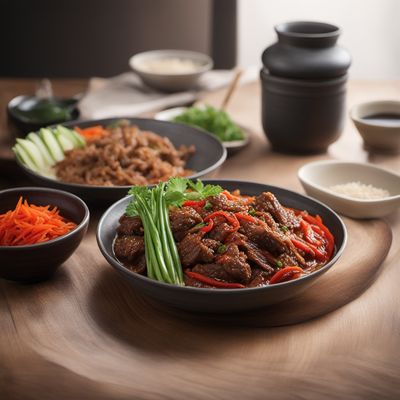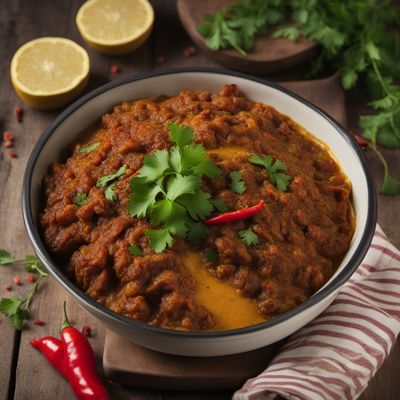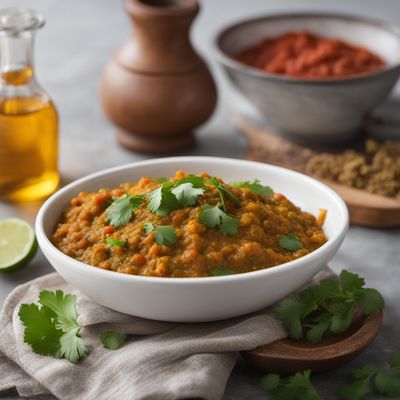
Ingredient
Kakrol
The Hidden Gem of Bengali Cuisine
Kakrol is a small, spiky vegetable with a mild, slightly bitter taste. Its pale green skin is covered in tiny spikes, which soften when cooked. The flesh is tender and creamy, with a subtle crunch. Kakrol's appearance and texture make it a versatile ingredient that can be used in stir-fries, curries, or even pickles.
Origins and history
Kakrol is native to India and is widely cultivated in the eastern and northeastern regions, particularly in West Bengal. It has been a part of Bengali cuisine for centuries and is often associated with traditional recipes and festive meals. In addition to its culinary significance, Kakrol is also known for its medicinal properties and is used in Ayurvedic medicine to treat various ailments.
Nutritional information
Kakrol is low in calories and a good source of dietary fiber, vitamins A and C, and minerals like potassium and calcium. It also contains antioxidants that help boost immunity and promote overall health.
Allergens
There are no known allergens associated with Kakrol.
How to select
When selecting Kakrol, look for firm, unblemished vegetables with bright green skin. Avoid any that have soft spots or signs of decay. The spikes on the skin should be intact and not falling off. Choose smaller Kakrol for a more tender texture.
Storage recommendations
To store Kakrol, place it in a perforated plastic bag and store it in the refrigerator. It can be kept fresh for up to a week. Avoid washing Kakrol before storing, as moisture can accelerate spoilage.
How to produce
Kakrol can be grown in home gardens or containers. It requires a warm climate and well-drained soil. Sow the seeds in spring or early summer and provide support for the vines to climb. Regular watering and fertilization will help ensure healthy growth. Harvest the Kakrol when it reaches a size of about 2-3 inches.
Preparation tips
To prepare Kakrol, wash it thoroughly and trim the ends. The spikes can be removed if desired, but they soften when cooked and are safe to eat. Kakrol can be stir-fried with spices, added to curries, or stuffed with a flavorful filling. It can also be pickled for a tangy and spicy accompaniment.
Culinary uses
Kakrol is commonly used in Bengali cuisine, where it is added to various dishes like Kakrol Bhaja (stir-fried Kakrol), Kakrol Shorshe (Kakrol cooked in mustard sauce), and Kakrol Posto (Kakrol cooked with poppy seeds). It is also used in pickles and chutneys for its unique flavor and texture.
Availability
Kakrol is primarily available in India, particularly in the eastern and northeastern regions. It is commonly cultivated in West Bengal and is a staple in Bengali cuisine.
More ingredients from this category
Recipes using Kakrol » Browse all

Hearty Russian Meat Soup
Savory Delight: A Taste of Russian Meat Soup

Sisnu ra Aloo Ko Tarkari (Nettle and Potato Curry)
Nepalese Nettle Delight: A Flavorful Twist on Potato Curry

Malaysian Chinese Pasty
Savory Delight: Malaysian Chinese Pasty

North Korean-style Kuzu Kapama
Spicy Lamb Stew with Korean Flair

Žemaičių Blynai with a Twist
Savory Lithuanian Potato Pancakes: A Modern Twist on Žemaičių Blynai

Kashmiri-style Potato and Meat Tortino
Kashmiri Delight: A Spiced Potato and Meat Tortino

Classic Roman Potato Frittata
Savory Delight: Roman Potato Frittata with a Twist

Aloo ka Bharta with a Twist
Spiced Mashed Potatoes: A Flavorful Twist on Aloo ka Bharta

Pierogies with a European Twist
European-Inspired Pierogies: A Delightful Fusion of Flavors

Georgian-style Farmer's Omelette
Savory Delight: Georgian-inspired Farmer's Omelette

Zurrukutuna - Algerian Spiced Vegetable Stew
Savory Delight: Algerian Zurrukutuna - A Burst of Flavors in Every Bite!

Crispy Battered Haddock with Chunky Chips
Golden Delight: Crispy Battered Haddock with Chunky Chips